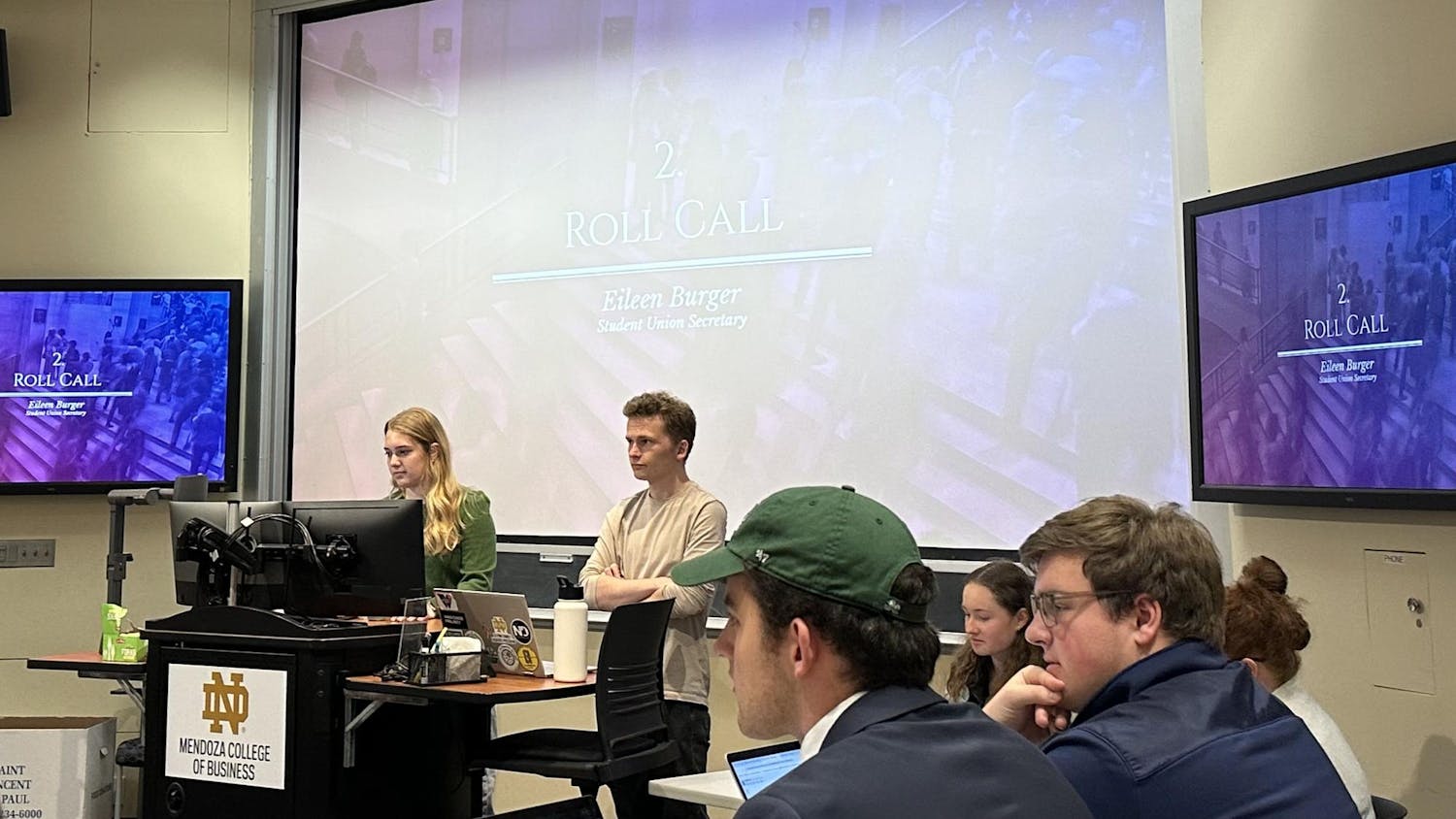While the Notre Dame community usually braves its fair share of winter weather, a combination of road conditions and frigid temperatures Jan. 6 necessitated closing campus for a day-and-a-half.
Superintendent Pat McCauslin and Assistant Superintendent Tim Dyczko of the Landscape Services Center were on site to manage the snow removal following the storm. Although campus roads and sidewalks were cleared of snow, McCauslin said the storm left the roads in poor condition around Notre Dame.
“[The driving] wasn’t difficult on campus because we were pretty much on top of that situation,” Dyczko said. “Our campus was fine. It was very passible.”
McCauslin said side roads around the county were left unplowed for one to two days. He said campus shut down due both to the poor state of the roads in the South Bend area and the cold temperatures.
“We were [at] minus 15 as an ambient air temperature, [and there were] 25 mile per hour winds so the wind chill temperature was down to minus 45 for a while,” he said.
A countywide state of emergency was declared and no traffic was allowed on the streets, McCauslin said.
“When they declare a regular state of emergency they can actually stop and ticket people for being on the streets unless you’re emergency personnel,” he said. “All the staff in landscape services are considered essential personnel with snow emergency situations like that.”
McCauslin said in order to stay ahead of incoming storms and to keep up with general landscape the Department of Landscape Services has 31 full-time staff members. Although the staff generally rotates through three shifts during the course of a day over the winter months, McCauslin said situations such as the snowstorm require two 12-hour shifts.
“About 4 o’clock in the morning we started New Years Day and worked a full day on until 2 a.m. the next day,” he said.
The decision to close campus, however, rested with a university committee advised by Landscape Services, NDSP and the Office of Campus Safety. McCauslin said his department advises on weather conditions while NDSP advises on county and city road conditions to determine whether or not to close the campus.
“It’s a difficult decision to make, certainly, in that you don’t want to put anyone’s life at risk,” he said.
Not only did this particular storm bring in 12 to 15 inches of snow, it was also a heavy lake snow with a higher water content, Dyczko said.
“It takes us a little longer to get it off the roads,” he said. “It’s harder to move. Harder on equipment.”
McCauslin compared the snow to the consistency of wet sand.
“It can get that heavy,” he said. “And just the way it snowed, it was continuous so it’s just a matter of keeping at it, not letting it build up.”
The snow was accompanied by winds that piled the snow in drifts, McCauslin said.
“We did a lot of work with drifting,” he said. “It just slows you down, so it slows the operation down. You get one area cleared and you go back 20 minutes later and it’s plugged shut again, so you just keep opening it up and opening it up.”
McCauslin also said lake snow is more difficult for meteorologists to precisely forecast. Determining the start and stop times and even predicting potential amounts of snow to be received are more difficult due to a lake effect.
“I’ve seen it snowing like hell here and if you went five miles that way it was blue sky,” Dyczko said. “And that’s just part of living in South Bend, you just never know.”













